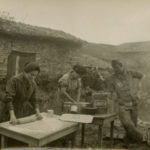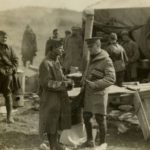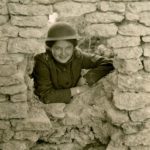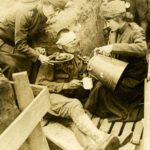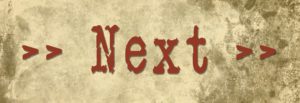
Life on the Frontlines
The Salvationists faced hardship and danger while serving near the frontlines; yet, they accomplished their work with their faith in God forefront.
They had no formal military training and only helmets and gas masks for protection. Often within range of artillery and mustard gas attacks, some Salvationists suffered injuries, illness or exhaustion. Lodgings frequently included dugouts and partly destroyed buildings. Some women recalled warming their feet by lit candles to prevent frostbite. Adjutant Margaret Sheldon wrote, “The rats made such a noise over our heads, we didn’t get to sleep.”
Male Salvationists ministered to soldiers, drove ambulances, transported supplies to huts and aided in hut chores.
Female Salvationists’ duties included ministry, aiding the injured, preparing and serving refreshments, repairing soldiers’ uniforms, arranging for transfer of soldiers’ pay home, writing condolence letters, visiting hospitalized soldiers, decorating graves and more. To the soldiers, these women symbolized the wife and/or mother and home they left behind.

